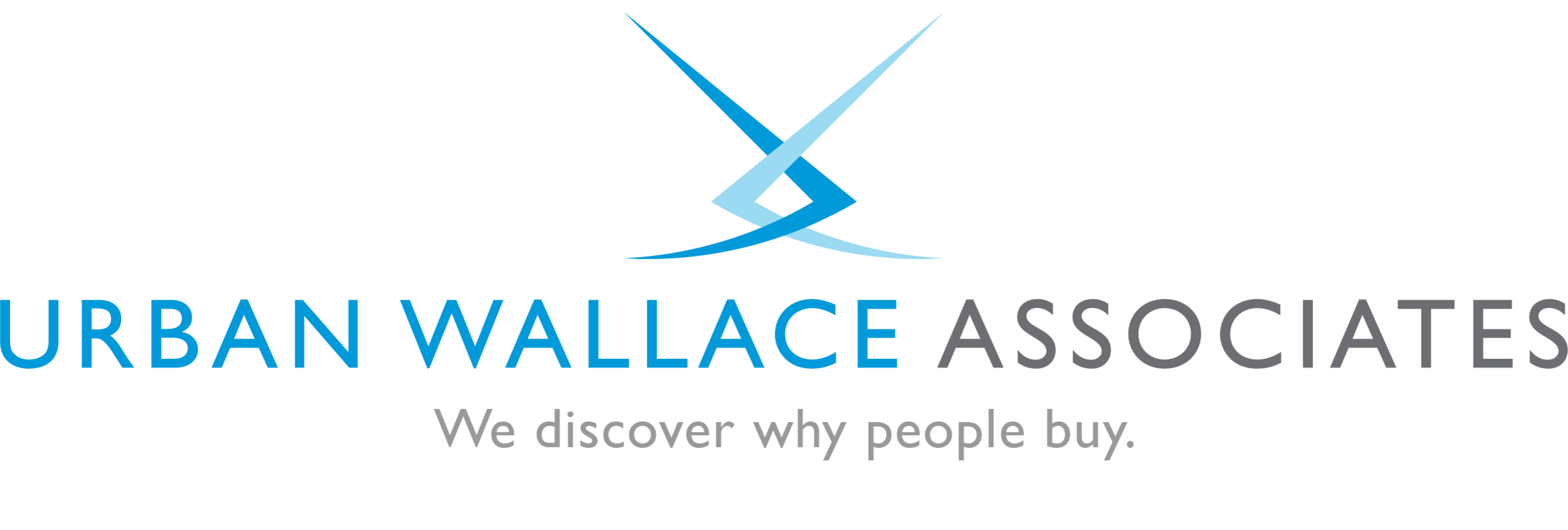


Urban Wallace Associates is a marketing strategy and research firm.
We develop new products and services with marketing programs based on Purchase Logic: an understanding of what drives the buying decisions of individuals. We have had success with consumer products, financial services, software, supply chain services, transportation, and turning products into services.
FEATURED ARTICLE
Purchase Logic: The Foundation of Marketing Strategy
The foundation of a successful marketing strategy is an understanding of what product/service should be offered, how it should be presented, and to whom. Determining these three things is the essence of the marketing function. Purchase Logic is marketing's primary tool for coming up with the answers.
Part 1. What is Purchase Logic?
Purchase Logic is the description of how and why someone buys a particular product or service. Purchase Logic is an understanding of customer motivation that goes far beyond industry or demographic classifications. Purchase Logic defines what an individual customer wants and how he or she sorts among different alternatives.
The more factors involved in a purchase decision, the more complicated Purchase Logic becomes. Small, routine purchases have simple Purchase Logics.
The complexity of Purchase Logic increases as any of the following variables increase:
the number of needs and wants to be satisfied
length of commitment to or longevity of the product/service
number of people involved in the decision
number of alternatives
price
Two examples illustrate how Purchase Logic becomes complex. First, think about buying a meal for lunch at work. You are hungry, have half an hour to spend and have no plans to meet anyone. The decision is simple. You run downstairs to the cafeteria and pick up a sandwich for four dollars. This choice was easy because you had few options and a very simple need to satisfy your hunger and perhaps also take a little break. The price was also insignificant.
Now think about buying a meal on Saturday night. Because you are going out with your friends, you sort through many more factors to arrive at a decision about where to go. Hunger is only one need to satisfy. You also seek some kind of entertainment or atmosphere. You have several people's tastes and food preferences to blend and will spend a significant amount of money. Further, you have many more options. Even if you are not aware of it, you use a fairly complicated Purchase Logic in selecting the restaurant.
This latter scenario is still quite straightforward compared with most purchase decisions. Thus, in order to succeed in selling a product or service, it is important to take a systematic and formal approach to looking at Purchase Logic.
“I always come back to Urban Wallace for marketing research. They make sure we hear the truth, not just what we want to hear. Their recommendations are based in the competitive reality we face, but may not always understand.”
FEATURED ARTICLE
Turning Products into Digital Services
Globalization and the Internet have profoundly altered customer expectations. Today, customers expect prices to go down while received value increases. As a result, what customers want to buy and why they want to buy as changed. This new Purchase Logic is driving the transformation of product businesses into information-based digital services.
Two phenomena have come together to change customer behavior radically. First, twenty years of falling producer prices have conditioned customers to expect ever lower prices for improved products. Second, as digital technology has increased the ways in which product benefits can be created and delivered, buyers have demanded more control and customization. These changes are driving the digital services economy.
Lower Prices Drive the Demand for Digital Services
Customers of the global economy expect the prices of goods and services to go down. They expect to pay less than last year and are confident that next year’s prices will be even lower.
Many decades of rapidly falling computer prices greatly altered customer expectations about price and performance. Price declines of 30% per year were common.
Next came Walmart stressing “Falling prices!” across a broad range of items: apparel, electronics, food, housewares and sporting goods. Walmart created and fulfilled expectations that prices will go down.
Producer prices, as measured by the US Durable Goods Price Index fell 20% from 1997 to 2017. Today, the cost of durable goods in the United States is the same as it was in 1984, 33 years ago.
Today, the retail price leader is Amazon. By providing shopping as a digital service, Amazon offers customers unmatchable price, selection, and convenience.
Digital Services Offer Control and Customization
Delivering product benefits as a digital service does more than disrupt pricing; it offers multiple ways of enhancing customer value.
The first aspect of increased control made possible by digital services is “pay for only what is used.” Farmers and construction crews want to pay only for their number of hours of heavy equipment use. Likewise, airlines want to pay only for hours of engine use by their fleet of planes. They all choose to leave ownership costs and maintenance responsibilities to someone else. Also, they want a guaranteed number of productive hours each season or year.
Customers expect that digital technology will allow them to control and shape the product benefits they buy. Today’s buyers demand the opportunity to customize their actual experience with your product. By customizing their experience, buyers become co-creators of value.
“Without their work, our strategic plan would have failed. They showed us how to make continuous improvements in service that increased customer loyalty.”


